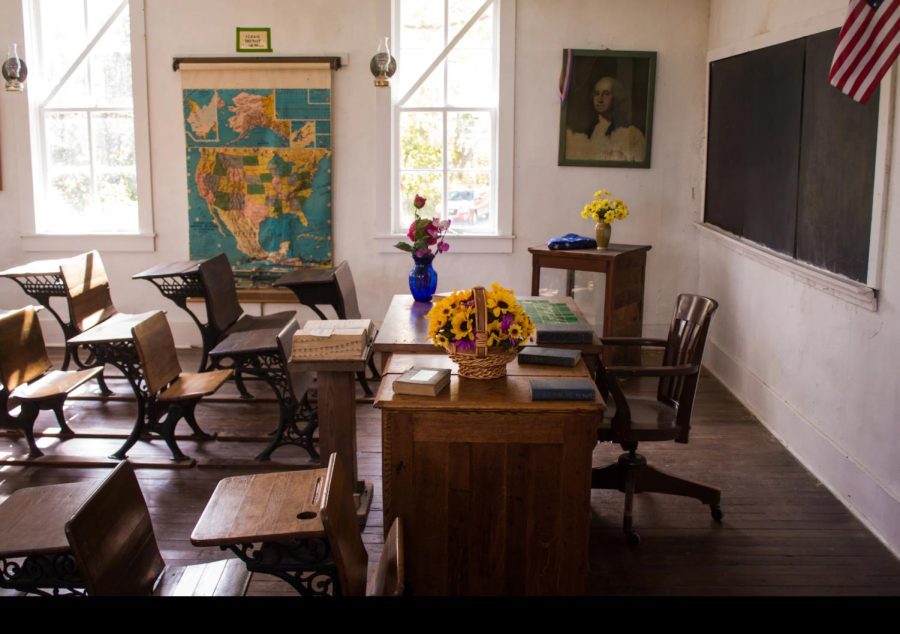Teaching Race is All-American
November 17, 2022
Now in my final year of high school, I can not say that my education has been all-inclusive. All but a single book in the standard ninth through twelfth grade English curriculum are by dead white authors. My AP US History course consisted of taking repetitive fact-based tests without critical investigation of slavery, segregation, or discrimination. At Great Neck South, a school with a 65% Asian population, I doubt that the majority of my classmates know their own history—know the people who have shaped, fought, and died to create space for them today. Who is Richard Aoki? Anna May Wong? Vincent Chin? Wong Kim Ark? Larry Itliong?
I crave for an encompassing and liberatory education that could remedy this vacuum. So when Sahar Tartak, North High’s Class of 2022 Valedictorian, writes in the Wall Street Journal that race-centered lessons are “race-obsessed,” “anti-American,” and infringe on a “basic truth,” I question how our experiences in the same district have diverged so dramatically, and I feel indignation that the reality of systemic racism in the United States is up for dispute.
Tartak’s choice to speak up in the face of a power imbalance, in which “[her teachers had] the power to grade [students] and affect their prospects of getting into college,” is commendable. Her feelings of being belittled by her teachers and the district are valid. Mistreatment, especially by adults responsible for guiding students, should never be condoned.
Nonetheless, Tartak expressing discontent that she couldn’t voice her opinions while denouncing and labeling other opinions as anti-American points to a clear hypocrisy in discussing race. Celebrating American democracy means prioritizing civil and courteous conversation so that no perspective is dismissed.
As a person of color, race commands my existence. As Toni Morrison says, “[Racism] keeps you explaining, over and over again, your reason for being.” Race is not an obsession. Again and again, since the 1960s, systemic racism has been supported by countless studies conducted by Harvard, Stanford, MIT, Pew Research Center, and many others.
In the workforce, the Black unemployment rate has consistently been twice that of whites in the past 60 years. In education, Black students are three times more likely to be suspended than their white peers for the same infractions. In criminal justice, Black people are 20% more likely to be sentenced to jail time, and typically see sentences 20% longer than those for whites convicted of similar crimes. In housing, Black homeownership pales at 42% in comparison to a 72% white homeownership. In surveillance, Black drivers are 30% more likely than white drivers to be pulled over by the police. Historians and professors like Dr. Donald Yacovone, Dr. Ibram X. Kendi, Dr. Amity Noltemeyer, and Dr. Joe Feagin, have repeatedly proven how history textbooks and education have disguised white supremacy by failing to mention and examine institutional racism authentically.
Since the founding of our country, America has been obsessed with race. Race is inextricable from American history. Race is ingrained in our current institutions. Race is necessary to teach in schools. It should be our obsession to confront race, impart the truth, and advocate for a more just future.
By incorporating lessons focused on race, schools are not indoctrinating or coercing students to pledge to an ideology. High schoolers, fourteen to eighteen-year-old young adults, are mature enough and have developed the critical thinking abilities needed to make their own evaluations about information they are taught. When Alan Brinkely called American colonel George A. Custer “colorful and controversial” in my AP US History textbook The Unfinished Nation, I understood that through ambiguous diction, Brinkley wishes to avoid discussion about Custer’s brutality towards Native Americans. When teenagers have already aligned with political affiliations, a single lesson is far from able to indoctrinate them. Teaching students about concepts like white fragility does not accuse them of upholding white supremacy. Rather, it illuminates academically-established theories that advance students’ societal understanding so they can become more well-rounded and compassionate people who positively change the world.
Acknowledging America’s legacy of institutionalized racism does not have to be painful, and it does not have to sacrifice the ideal of America. America was built on the promise of progress—admitting to and amending racial issues only contributes to that progress.
My mother and father, similarly to Tartak’s mother and grandfather, found refuge in America because like Tartak writes, it is ultimately “a wonderful place full of generous and open-minded people.” But in the past few years, they have accepted the agonizing truth that they don’t belong. They have watched Yao Pan Ma, Christina Yuna Lee, Michelle Alyssa Go, Vicha Ratanapakdee, and Woom Sing Tse—immigrants like them who chased their American Dream—be attacked in broad daylight and die because of the color of their skin.
Despite that, my mother proudly presents her earned American passport. She is as unconditionally “American” as any of us, regardless of our political beliefs.
If anything, being American means remaining hopeful and tender-hearted in spite of constant conflict and deepening division. The nation’s schools have a duty to teach students that basic truth.






